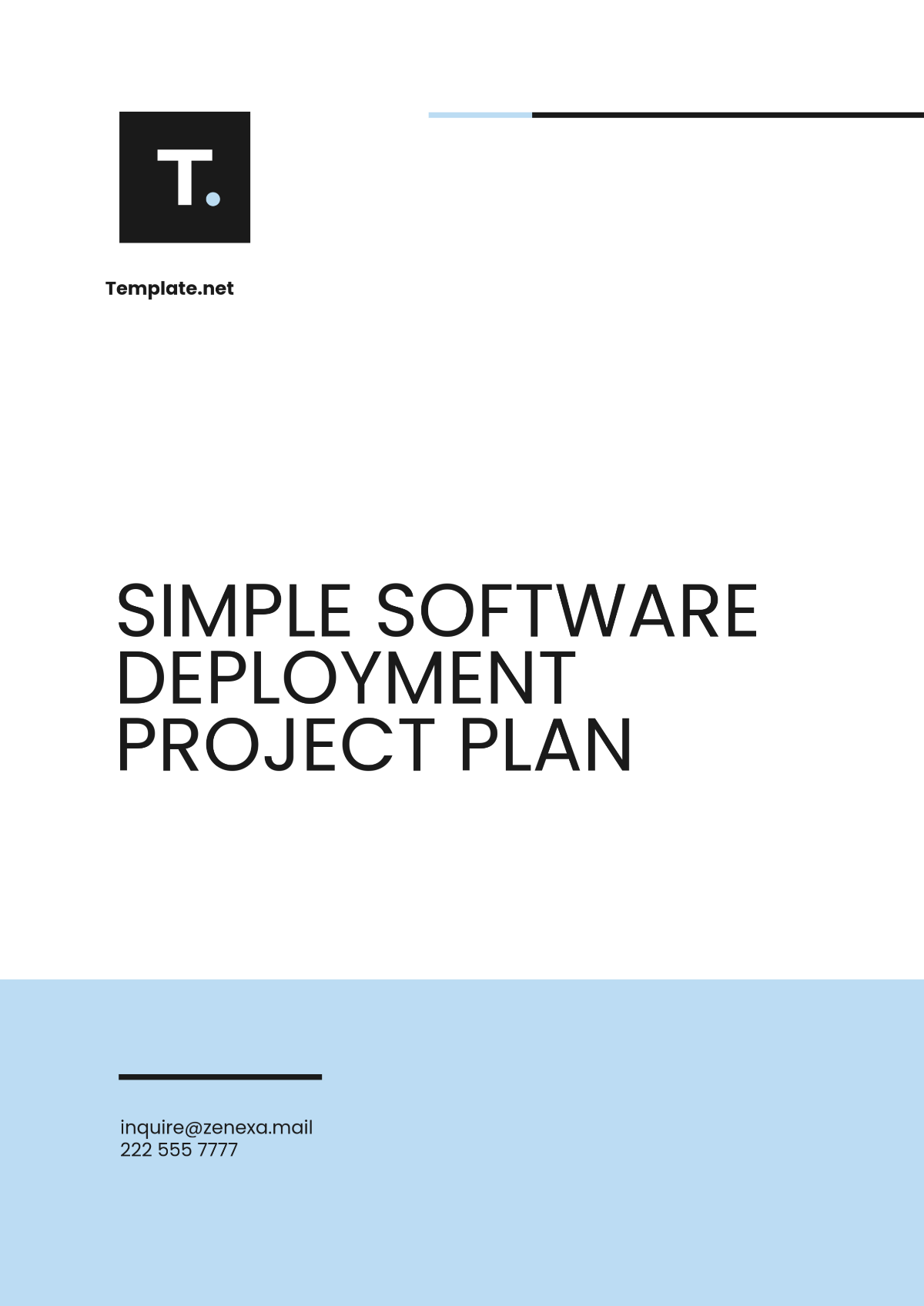Simple Software Deployment Project Plan
Prepared By: [Your Name]
Company: [Your Company Name]
I. Project Overview
The objective of this project is to manage the successful deployment of the Simple Software solution, which aims to enhance operational efficiency for our clients. The scope includes planning, deployment, testing, and support activities associated with rolling out the software to all user bases.
The goals of this deployment are:
To ensure seamless integration of software with existing systems.
To minimize downtime during the deployment process.
To train users and provide ongoing support post-deployment.
II. Roles and Responsibilities
Role | Responsibilities |
|---|
Project Manager | Oversees project execution, coordinates between teams, and manages timelines and resources. |
Software Engineer | Responsible for software configuration, coding adjustments, and technical troubleshooting. |
QA Specialist | Conducts pre- and post-deployment testing, ensuring software quality and performance. |
IT Support | Provides technical support to users, addresses user issues, and handles software maintenance. |
Trainer | Develops and conducts training sessions for end-users to ensure effective software use. |
III. Timeline and Milestones
Below is the estimated timeline with key milestones for the project:
Phase | Milestone | Deadline |
|---|
Planning | Define roles, gather requirements | January 15, 2060 |
Development | Complete software configuration | February 28, 2060 |
Testing | Finalize testing protocols | March 15, 2060 |
Deployment | Execute deployment process | April 10, 2060 |
Post-Deployment | Complete user training and support | May 5, 2060 |
IV. Risk Management
The project team has identified the following risks with their corresponding mitigation strategies:
V. Resources Needed
Essential resources required for the deployment include:
Hardware: High-performance servers, and updated workstations for testing.
Software: Latest deployment tools, testing suites, and monitoring applications.
Human Resources: A team of skilled project managers, software engineers, QA specialists, IT support staff and trainers.
VI. Deployment Process
The following steps outline the deployment process:
Preparation: Validate software readiness, and ensure that all systems are updated.
Installation: Install the software onto the designated servers and workstations.
Configuration: Configure software settings to match organizational requirements.
Integration: Integrate the software with existing systems to ensure compatibility.
Validation: Run tests to verify successful installation and configuration.
VII. Testing and Validation
Ensure software quality with defined testing workflows:
Pre-Deployment Testing:
Post-Deployment Testing:
VIII. Communication Plan
Effective communication strategies include:
Weekly team meetings to discuss progress and issues.
Regular updates via email and project management tools to track progress.
An open-door policy for feedback and queries from all stakeholders.
IX. Post-Deployment Support
The support process post-deployment involves the following:
Project Plan Templates @ Template.net






























